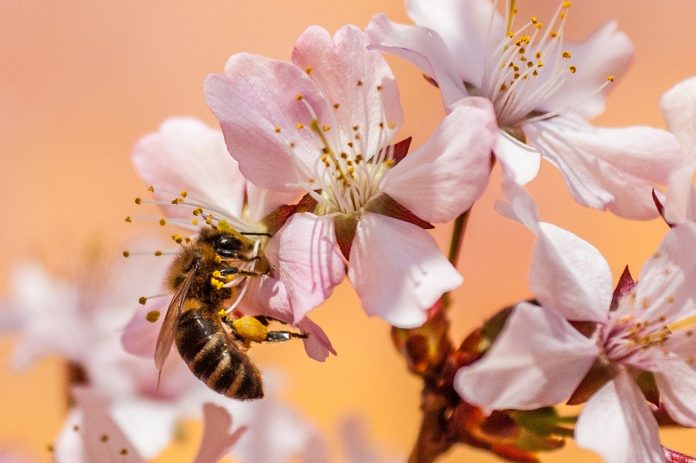By Brianna Roe
While staring out my office window and watching the snowfall, it is hard to believe that spring and planting season will be here before we know it.
There is one vital part to planting season that often gets overlooked. That is that pollinators that make it possible.
There are a few things that we can do to help ensure the survival of pollinators, whose population seems to be on the decline. You do not need to have a 100-acre cornfield to help with the survival of pollinators. With just a few steps you can turn your backyard into an oasis for many different species of pollinators.
Flower selection
When selecting flowers to plant in your flower beds, try to stick with flowers that are native to the area. By selecting native flowers, you ensure that the pollinators that live in your backyard are getting the nutrients that they need.
Try to avoid hybrid flowers as they can sometimes not have a scent or nectar. When planting flowers, you will want to pick a variety of colors, shapes and plants that will bloom from early spring to late fall. Also, try to find flowers that bloom at night to ensure bats and moths get their share of nutrients as well. When selecting flower placement, try to plant flowers in clumps.
Leave the backyard wild
When we begin backyard clean-up in the spring, we often go a little overboard. Instead of weeding every space in your flower beds or gardens, leave areas of weeds for the bees. Bees enjoy cover, and other pollinators will use it as shelter.
If clover grows in your yard or garden area be sure to leave a section of that for the bees as well. Clover is one of their favorite treats. When trimming trees in the spring leave a few dead limbs in the trees that will not become a safety hazard further down the road. Bees often choose dead limbs to house their hives.
By planting an area of milkweed in your garden it allows a safe place for monarch caterpillars to nest, it also provides an additional food source for monarch butterflies.
Providing other sources of nutrients
There are other ways to help the pollinators beyond flower selection and creating habitats. If you have any fruit that is overripe create an area in your yard to place the fruit, butterflies will come here to feed. Butterflies also enjoy salt licks, create some in your yard by placing a sponge in saltwater or finding a damp area that is bare dirt in your yard and sprinkling salt over it.
By attracting more pollinators to your yard, it helps to promote pollination for flowers and vegetables. By creating an environment for cross-pollination, you are increasing vegetable yield and plant vigor. It also makes your backyard a beautiful place to be with all the beautiful colors and animals buzzing around.
Related Content
- How to help Ohio’s specialist pollinators
- Garden cleanup: How to help overwintering pollinators
- How to set up a water source for bees
- How to create a bee lawn
- How to help wild bees this summer
- How to plant a prairie garden
- How to garden for pollinators
- How to plant a hummingbird garden
- How to create a butterfly garden
- How do I attract native bees to my yard and garden?
(Brianna Roe is an agriculture technician with the Guernsey Soil & Water Conservation District.)













